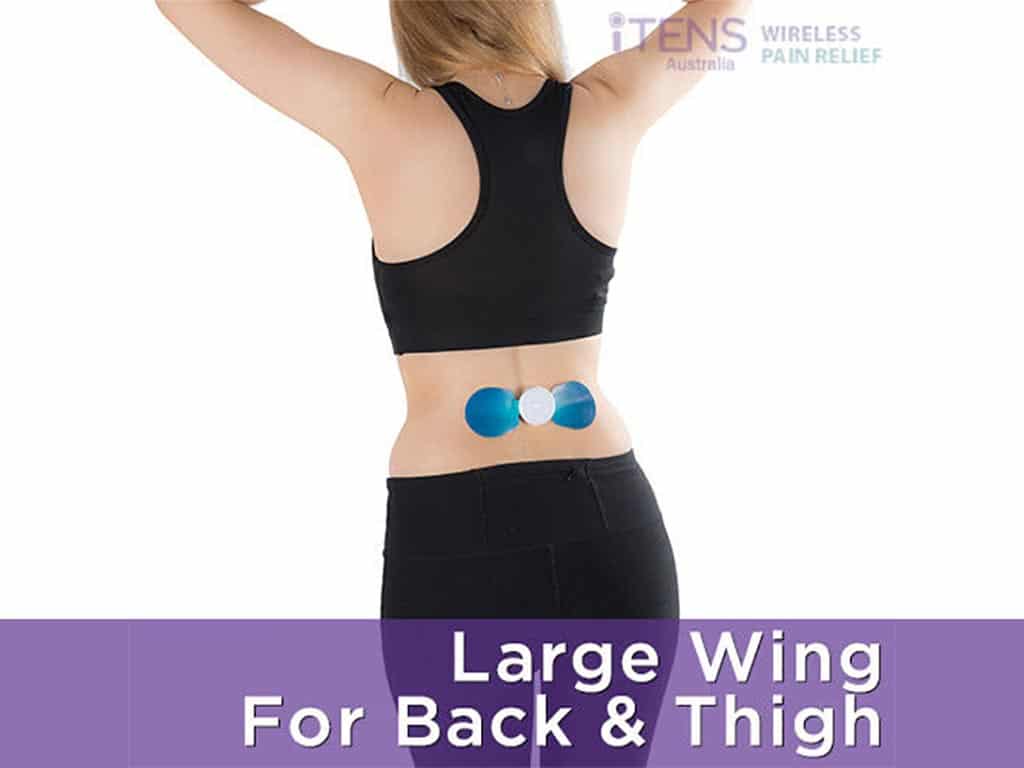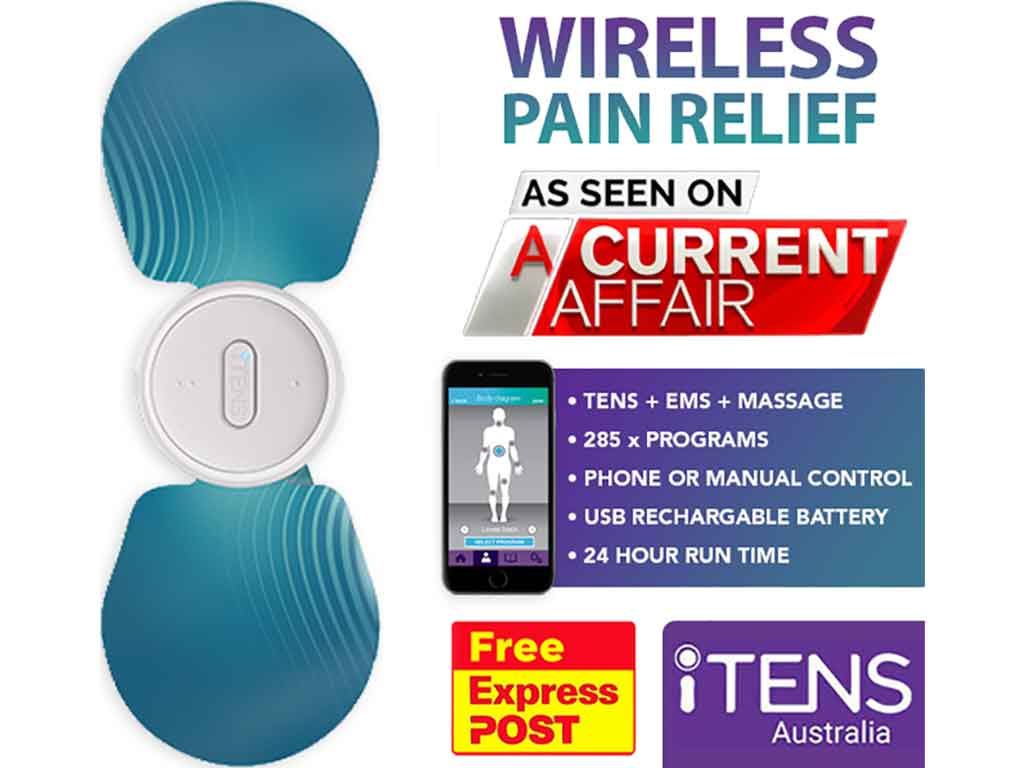
Every month, many women experience the uncomfortable and debilitating pain of menstrual cramps. Fortunately, there is a Transcutaneous Electrical Nerve Stimulation or TENS unit for period cramps. It is an electrical device that provides a promising solution for addressing period pain. Accordingly, it can help manage painful periods by delivering low-voltage electrical currents. These electrical pulses can block pain signals and trigger the release of endorphins. Also, it provides adjustable settings for effective relief.
Menstrual period pain, also known as dysmenorrhea, affects a large proportion of women. It can range from mild discomfort to severe cramps, impacting the overall quality of life. Many women resort to over-the-counter painkillers or other traditional treatment options to find relief from period cramps. However, some are seeking alternative methods of pain relief, like TENS therapy. This article will present how TENS helps in managing menstrual pain, how to use it, and the safety precautions.
How a TENS Unit for Period Cramps Helps in Managing Pain?
A TENS unit for period cramps is a battery-operated device that can help manage discomfort by sending electrical impulses. The machine sends electric current to the body through electrode pads placed on the skin. Accordingly, when using TENS, it is important to understand that different frequencies and intensities can have varying effects on period pain relief.
Low-Frequency (LF) TENS (below 10 Hz) is thought to activate the natural pain relief mechanisms of the body, such as endorphins. On the other hand, High-Frequency (HF) TENS (above 50 Hz) is believed to interfere with the transmission of pain signals in the spinal cord. Nevertheless, LF may be more effective for chronic or severe pain, while HF is often used for acute, short-term relief.
When adjusting the intensity of TENS devices, it is crucial to start at a low level and gradually increase it to a comfortable level. Too high of an intensity can cause discomfort, while too low of an intensity may not provide effective relief. Hence, users should always follow the guidelines provided by their TENS unit and consult with a healthcare professional.
Main Theories at Work
- Pain Gate Theory: this suggests that the electrical signals from the TENS device can interrupt or close the gate that allows pain signals to travel to the brain. Hence, it means that the non-painful electrical signals from TENS can block the transmission of painful signals. This reduces the perception of levels.
- Endorphin release: the electrical stimulation can prompt the production of endorphins. These are the natural chemicals of the body that act as natural painkillers.
- Blood circulation: TENS therapy may impact blood flow in the treatment area. Delivering electrical impulses may dilate blood vessels. Therefore, it can reduce discomfort and promote healing.

How to Use a TENS Unit for Period Cramps
Using a TENS unit for period cramps involves several key steps. Firstly, check whether the TENS device is properly charged or has fresh batteries. Secondly, connect the electrode pads to the central unit using lead cables or to a smartphone via Bluetooth for wireless. Thirdly, identify the treatment area and prepare it. Then, position the pads following the proper electrode placement guide.
Once the electrodes are in place, the user can turn on the TENS unit. Most TENS allow individuals to adjust the settings. Hence, modify the frequency, intensity, and duration of electrical pulses. Also, some TENS models may offer a pre-set program for treating a painful condition directly. Therefore, select a program that explicitly targets menstrual cramps.
Nevertheless, it is advisable to start with the lowest settings and moderately increase it to comfort level. The duration of TENS therapy for period discomfort can vary depending on individual needs and preferences. Generally, sessions may last between 15 to 30 minutes. After the TENS treatment, individuals should turn off the device before removing the electrode pads from the skin.
Electrode Placement Guide
When using TENS for menstrual discomfort, proper electrode placement is essential for effective relief. For period cramps, the lower abdomen is a primary area for the electrode pad placement. Hence, position the pads on both sides of the lower abdomen, targeting the muscles and nerves in the area. In addition, users can also place the pads on the lower back.
Accordingly, the symmetrical placement of the electrode pads is important to ensure the even distribution of electrical stimulation. Nevertheless, users should be mindful of their comfort level and make adjustments to the placement of the electrode pads if necessary.

Safety Precautions When Using a TENS Unit for Period Cramps
When using a TENS unit for period cramps, it is important to observe specific safety precautions. Before using a TENS device, individuals should consult with a health professional or pain specialist. This is specifically important for those with underlying medical conditions. Accordingly, before applying the electrodes, the user should inspect the treatment areas for any open wounds or rashes.
Furthermore, adhering to proper pad placement guidelines helps minimise the risk of any adverse effects related to the application. Also, it is important to avoid starting the therapy with high settings. This can cause electrical shocks and further discomfort. During TENS therapy, individuals should monitor the electrode placement site for any signs of redness and irritation.
Overuse of a TENS device, such as prolonged or excessive application of electrical stimulation, should be avoided. Hence, users should adhere to the advisable treatment durations. Moreover, do not use the device while doing safety-sensitive duties. The electrical currents can diminish focus, leading to accidents. Also, store the unit in a safe and dry environment for longevity.
Potential Side Effects
One of the potential side effects of using TENS is skin irritation in the electrode placement site. This may manifest as redness, itching, or discomfort. During TENS therapy, some individuals may experience muscle twitching. Adjusting the settings or repositioning the electrode pads may help alleviate this discomfort.
In rare cases, individuals may experience allergic reactions to the adhesive or materials in the electrode pads. This can result in skin redness, swelling, or itching at the application site. Also, the improper use of TENS, such as setting the intensity too high, may result in painful sensations. Hence, it is important for users to follow guidelines.
Conclusion
Overall, using a TENS unit for period cramps can be a safe and effective method of pain relief. TENS devices are portable units that use mild electrical currents to stimulate the nerves. Accordingly, it helps in managing discomfort by blocking pain signals, triggering the release of endorphins, and improving blood circulation. Additionally, the frequency and intensity of electrical stimulation can have varying effects in managing menstrual cramps.
TENS devices are easy to use. Firstly, the individual needs to connect the electrode to the central unit. Secondly, the user will identify the treatment area and position the pads. Lastly, the person can adjust the settings and activate the stimulation. However, proper electrode placement is crucial. For period discomfort, the placement is usually in the lower abdomen or the lower back. Nevertheless, it is vital to know the safety precautions and potential side effects of TENS.




















